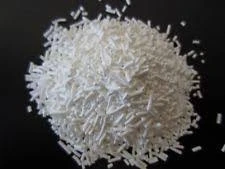
Exploring Common Food Additives and Their Effects on Flavor, Texture, and Shelf Life
Understanding Common Additives in Our Daily Lives
In today's fast-paced world, it’s nearly impossible to avoid processed foods. From packaged snacks to ready-made meals, we routinely consume products that contain a multitude of additives. These substances, often viewed with skepticism, play crucial roles in food preservation, flavor enhancement, and appearance improvement. However, understanding what these common additives are and their effects on health is essential for making informed dietary choices.
What Are Food Additives?
Food additives are substances added to food products to perform specific functions, such as enhancing flavor, texture, or appearance, extending shelf life, and improving nutritional value. They can be natural or synthetic, and come in various forms including preservatives, colorants, flavor enhancers, emulsifiers, and stabilizers.
Common Types of Food Additives
1. Preservatives These ingredients are used to prevent spoilage and prolong the shelf life of food products. Common preservatives like sodium benzoate and potassium sorbate inhibit the growth of bacteria, molds, and yeast. While they are effective in maintaining food quality, some individuals may experience allergic reactions to certain preservatives, leading to concerns over their long-term consumption.
2. Coloring Agents Food coloring enhances the visual appeal of products, making them more attractive to consumers. Artificial colorants, such as Red 40 and Yellow 5, are widely used in candies, beverages, and baked goods. There is ongoing debate about the safety of synthetic colorings, particularly regarding hyperactivity in children and potential carcinogenic effects, prompting some manufacturers to shift towards natural alternatives, like beet juice or turmeric.
common additives

3. Flavor Enhancers Monosodium glutamate (MSG) is one of the most well-known flavor enhancers, often added to savory dishes to intensify the existing flavors. While it has been deemed safe by regulatory agencies, some people report sensitivity to MSG, experiencing symptoms such as headaches and nausea, which has fueled the controversy surrounding its use.
4. Emulsifiers These additives help blend ingredients that typically don’t mix well, such as oil and water. Lecithin, often derived from soybeans, is a common emulsifier in salad dressings and baked goods. While emulsifiers improve texture and stability, some studies suggest they may disrupt gut microbiota, raising questions about their long-term health effects.
5. Stabilizers and Thickeners Ingredients like carrageenan and xanthan gum are used to improve the consistency and thickness of food products, such as ice cream and sauces. While generally considered safe, some individuals may experience gastrointestinal issues from certain stabilizers, leading food scientists to explore potential alternatives.
The Importance of Reading Labels
As consumers, it's crucial to educate ourselves about food additives and their potential impacts on our health. Reading food labels can provide insight into the ingredients in our food and help us make better choices. Many health-conscious individuals opt for products with fewer additives or choose organic alternatives, which often contain fewer synthetic ingredients.
Conclusion
Food additives are an integral part of the modern food system, facilitating convenience and enhancing our culinary experiences. While many additives are considered safe by food regulatory authorities, it's essential to remain vigilant about what we consume. By staying informed, we can better navigate the complexities of food labeling, seek out healthier options, and ultimately make choices that align with our well-being. Whether you're a seasoned label reader or just beginning to explore the world of food additives, awareness is the first step toward a healthier lifestyle.
-
Pure Sodium Dichloroisocyanurate Dihydrate | Powerful DisinfectantNewsAug.29,2025
-
Industrial Chemicals: Quality & Purity for Every IndustryNewsAug.28,2025
-
Nitrile Rubber Honoring Strict Production StandardsNewsAug.22,2025
-
Aspartame Ingredients Honoring Food Safety ValuesNewsAug.22,2025
-
Fertilizer for Balanced Plant NutritionNewsAug.22,2025
-
Cyanide Gold Processing with High Purity AdditivesNewsAug.22,2025
-
Formic Acid in Textile Dyeing ApplicationsNewsAug.22,2025
Hebei Tenger Chemical Technology Co., Ltd. focuses on the chemical industry and is committed to the export service of chemical raw materials.
-

view more DiethanolisopropanolamineIn the ever-growing field of chemical solutions, diethanolisopropanolamine (DEIPA) stands out as a versatile and important compound. Due to its unique chemical structure and properties, DEIPA is of interest to various industries including construction, personal care, and agriculture. -

view more TriisopropanolamineTriisopropanolamine (TIPA) alkanol amine substance, is a kind of alcohol amine compound with amino and alcohol hydroxyl, and because of its molecules contains both amino and hydroxyl. -

view more Tetramethyl Thiuram DisulfideTetramethyl thiuram disulfide, also known as TMTD, is a white to light-yellow powder with a distinct sulfur-like odor. It is soluble in organic solvents such as benzene, acetone, and ethyl acetate, making it highly versatile for use in different formulations. TMTD is known for its excellent vulcanization acceleration properties, which makes it a key ingredient in the production of rubber products. Additionally, it acts as an effective fungicide and bactericide, making it valuable in agricultural applications. Its high purity and stability ensure consistent performance, making it a preferred choice for manufacturers across various industries.





